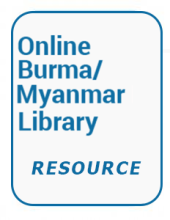Land Library Search
Through our robust search engine, you can search for any item of the over 73,000 highly curated resources in the Land Library.
If you would like to find an overview of what is possible, feel free to peruse the Search Guide.
/ library resources
Showing items 1 through 9 of 30.Myanmar has a total land area of 676,577 sq km with a population of 57.50 million. Total net sown area is 11.67 ml ha with the cropping intensity of 157.1%. Forest cover, 33.44 ml ha accounted for nearly half of Myanmar's land area.
Abstract: "Burmese refugees in Thailand maintain economic, social and
political links with their country of origin, but these transnational activities
are influenced by the politics and level of development of the country of
BURMA
LANDMINE
ISSUE
2009: UN Security Council - act now!...Understand us...KNU LANDMINE POLICY...Mine incidents rise...Landmine deaths double...Pizza-oven helps
Abstract: "While international humanitarian access in Burma has opened up
over the past decade and a half, the ongoing debate regarding the appropriate
relationship between politics and humanitarian assistance remains unresolved.
Mine Ban Treaty status:
Not a State Party...
Use:
Government and NSAG use continued in 2007 and 2008....
Stockpile:
Unknown...
Contamination:
Antipersonnel and antivehicle mines, ERW...
Estimated area of contamination:
This Report summarizes the
findings of the Food Security Profiling assessment carried
out across the Dry Zone, especially
in Magway Division in August 2008.
This is the first time a Food Security Prof
iling exercises has been conducted in the Dry
WHEN Snr-Gen Than Shwe relocated the seat of Burma’s military government to a site some 320 km (200 miles) north of the former capital, Rangoon, he did so without any fanfare.
Naypyidaw, now three years old, was designed and built to serve as the seat of Burma’s military government. For the ordinary Burmese who have to live and work there, it’s a city without a hear
Today’s food and financial crises have, in tandem, triggered a new global land grab. On the one hand, “food insecure” governments that rely on imports to feed their people are snatching up vast areas of farmland abroad for their own offshore food production.

